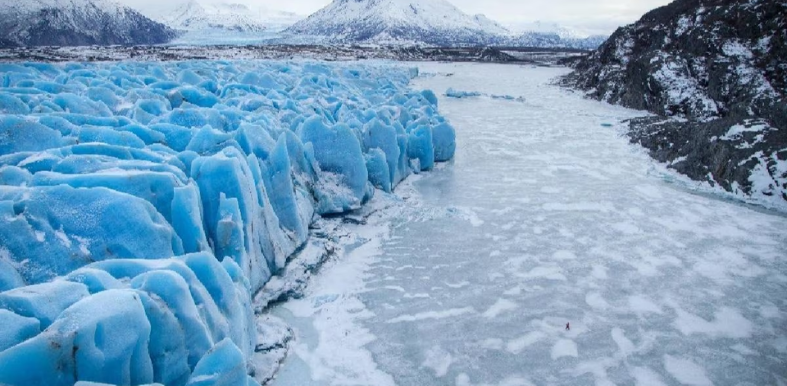Severe heatwave threatens Himalayan glaciers after record snowfall

After eight years, a substantial sheet of ice has blanketed the Himalayan glaciers, which have been continuously shrinking due to global warming. This comes after an unprecedented snowfall from February to May 1.
However, the heatwave now poses a severe threat to the 9,500 glaciers in the Himalayan range. Rising temperatures have made both the Himalayan regions and the plains across the country vulnerable to heat waves, creating a crisis for the health of these glaciers.
If the heatwave, which began in the second week of May, continues until June, the rate at which glaciers melt could be exponentially faster than normal. Environmental scientists and researchers are closely monitoring the situation in June, as there is a possibility of increased water levels in rivers and streams.
The increase in temperature by two to three degrees Celsius is raising concerns among environmental scientists. Interestingly, this year, snowfall in the hilly areas extended from February to May, rather than the usual December and January period. The Border Roads Organisation (BRO) had to clear 30 to 35 feet of snow from the Manali-Leh road along Rohtang Pass. As a result, Rohtang Pass and Kunjum Pass have not yet been fully restored for traffic.
Scientists warn that rising temperatures and heat waves are detrimental to glaciers. Chhewang Norbu, head of Darcha Panchayat located on the Manali-Leh road, noted that in 2016, Darcha village received 75 to 80 cm of snow. This year, it received 80 to 90 cm of snow.
Senior scientist Jesse Kuniyal from the Govind Ballabh Pant National Institute of Himalayan Environment in Almora highlighted that it is still the early phase of the heat wave.
If these conditions persist until June, the glaciers could be severely damaged by the arrival of the monsoon. He emphasized the need to monitor the weather closely in June, given that a significant amount of snow had fallen on the glaciers up to May.
The heavy snowfall this year has deposited about 25 to 35 feet of snow on many glaciers, including Bada Shigri, Chhota Shigri, Kulti, Shipping, Ding Karmo, Tapan, Gyafang, Manimahesh, Shili, Shamundri, Bolunag, Taragiri, Chandra, Bhaga, Kugti, Langar, Doksha, Neelkanth, Milang, Mukila, Miyad, Lady of Keylong, and Gangstang. Other glaciers that have benefited include Perad, Sonapani, Gora, Takdung, Manthora, Karpat, Ulthampu, Tharong, Shah Glacier, Patseu, Hamta and Panchnala.




